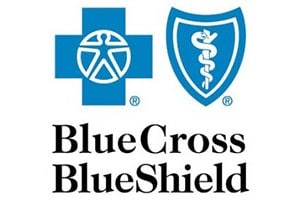
Deep Vein Thrombosis blood clots can be deadly but are preventable!
Risks of Deep Vein Thrombosis
Deep Vein Thrombosis (DVT), also referred to as Deep Venous Thrombosis, is a blood clot located within a deep vein, usually in the leg. A blood clot that breaks free and travels up to the heart or lungs is referred to as a Pulmonary Embolism (PE), which can stop blood flow and cause sudden death. The CDC estimates up to 100,000 Americans die every year from preventable DVT/PE
In addition, Deep Vein Thrombosis blood clots in the leg can permanently damage veins. The result in 50% of DVT survivors is Chronic Venous Insufficiency which results in long-term leg pain, heaviness and swelling that can progress to difficulty in walking, changes in skin color and open leg sores (known as leg ulcers). Deep Venous Thrombosis can significantly impair quality of life.
Causes of Deep Vein Thrombosis
Many patients ask us, "can varicose veins cause blood clots?" According to a recent study, 5% of patients diagnosed with chronic venous insufficiency, compared to the general population, are at risk for DVT. There is a distinct increased risk for patients over 70-years-old and obese. There are several factors known to contribute to the risk of DVT although a blood clot can occur in almost anyone.
- Heredity (Genetics)
- Age
- Obesity
- Smoking
- Lack of Exercise
- Pregnancy or Recent Birth
- Recent Surgery or Hospitalization
- Cancer Treatments
- Prolonged Sitting (Airplane Travel)
- Extended Bed Rest
- Oral Contraceptives
- Hormone Replacement Therapy
- Alcohol Consumption
Symptoms of Deep Vein Thrombosis
- Increased warmth in the affected area
- Pain or tenderness in the leg, ankle or foot
- Red or discolored skin
- Swelling in the affected area
Treatment of Deep Vein Thrombosis
The absolute best way to diagnose Deep Venous Thrombosis is with a Full Vein Exam and Duplex Ultrasound. A medical clinic with an experienced vein specialist should be able to get you in the same day for diagnosis if you have any concern about blood clots in your legs. Treatment and prevention will be accomplished in several ways depending on the patient risk factors and severity but usually starts with blood thinning medication.
Prescription compression stockings are a common preventative measure as are range of motion exercises, treating underlying blood disorders and vein therapy for Chronic Venous Insufficiency. An experienced vein doctor can discuss all treatment options with you after proper diagnosis from a Full Vein Exam and Duplex Ultrasound.
Advanced Vein Institute of Arizona is proud that our offices are staffed with only board-certified providers. To help them determine whether you might benefit from a minimally invasive vein treatment, please answer these questions:
Read MoreVein Treatment It is easy to forget about unsightly veins in the winter time when leggings and sweats are worn almost 24/7. In addition, the cooler weather helps to mitigate symptoms such as fatigue, heaviness, cramping, and swelling; all indications of underlying venous insufficiency. With spring right around the corner, now is the time to…
Read MoreAs you navigate your way through the barrage of holiday parties this season, it may be difficult to decide on certain indulgences. The general recommendation here at Advanced Vein Institute of Arizona is everything in moderation. However, there is one thing on a lot of holiday tables that can benefit your vascular health…cranberries! Due to…
Read MoreYou have put in all the hours of training in the water, time in the saddle and on the road; read and studied nutrition, hydration, and injury prevention. IRONMAN Arizona is less than 6 weeks away, and yet something might not be completely dialed in. You are stronger and more fit than you have ever…
Read MoreBinge watching your favorite series or games this week? . . . Avoid painful legs! Are you in to Game of Thrones or the Handmaid’s Tale? Maybe you are an avid NFL or MLB fan and can’t wait for a day to lounge around and catch up on the series, or binge all the games…
Read MoreDancing with Varicose Veins Has leg pain kept you in your seat and off the dance floor these days? You may have eliminated dancing because of symptoms associated with vein disease. Vein disorders are not always visible to the naked eye. Varicose veins or venous disease can cause aching legs, painful or restless legs, as…
Read MorePeripheral Vascular Disease: Not Always Just An Artery Issue When the term peripheral vascular disease (PVD) comes up; it is a common misconception that this refers to just arterial disease. PVD refers to both the arterial and venous circulation. Arteries in the legs carry blood from the heart to the toes (periphery), and veins carry…
Read MoreVARICOSE VEINS, VENOUS INSUFFICIENCY AND LEG ULCER TREATMENTS Insurance coverage is always dependent upon benefit eligibility, as outlined in your specific benefit plan. Some employers have chosen not to cover varicose vein treatment specifically, so be sure and check with your human resources department or call the toll-free number on the back of your insurance…
Read MoreTimes have changed – There are alteratives to painful vein removal surgery Gone are the days when your only remedy for varicose veins was vein removal or vein stripping. Our in-office procedures are the gold-standard. If you are scheduled for a procedure and would like to know what other options are available, call today for…
Read More






